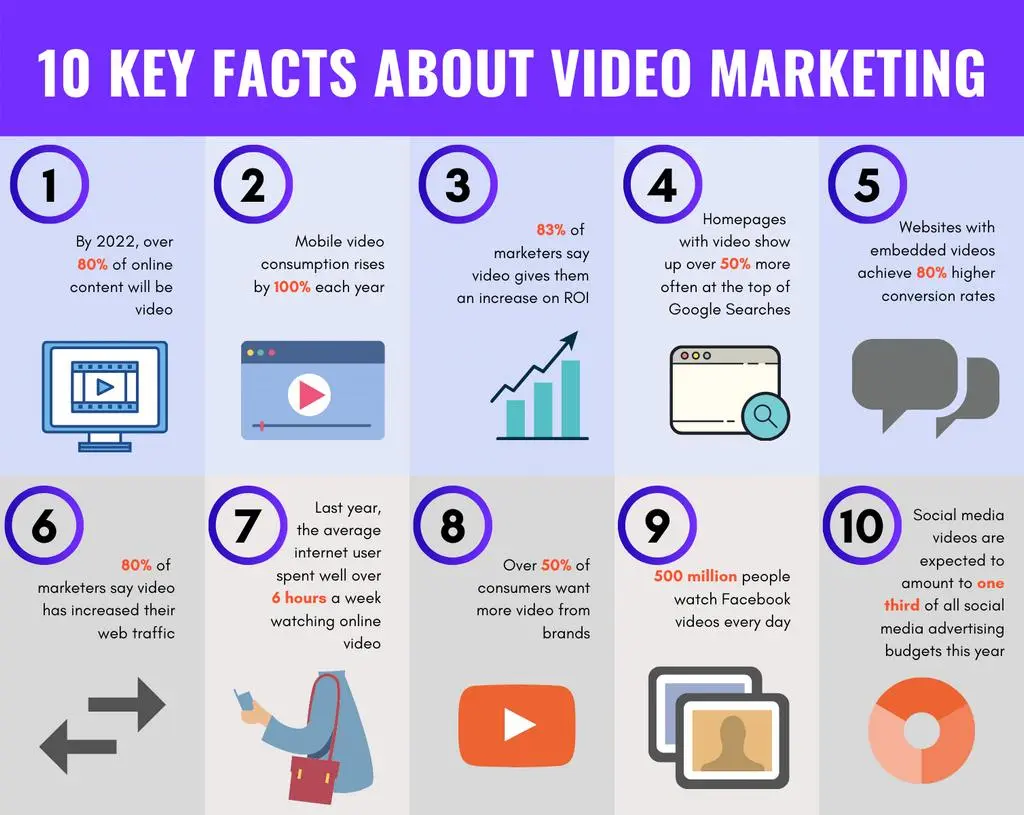
If you want to build your company’s online presence, it’s not enough to simply post your content online and forget about it. Without a comprehensive video marketing strategy or incorporating video storytelling, your content can get lost in the noise of the internet. However, with a little basic knowledge and a plan to guide you, you can capture your target audience’s attention and build your brand.
Below, learn more about video marketing in 2023 and get tips on optimizing your content from an RI videographer.
What is video marketing?
Video content marketing is when a brand makes and distributes videos that attract and engage their target audience. These videos can offer information about products and services, provide inspiration for your target audience, or simply be fun and entertaining. They’re usually published on an external platform, like Youtube or TikTok.In 2023, 91% of businesses use video marketing — and for good reason. According to a survey from Wyze, over 90% of brands that responded reported increased traffic and leads from video marketing. So, if you’re not already utilizing video marketing in your content strategy, you’re missing out.
Online video consumption statistics in 2023
On average, most people watch around 17 hours of video every week. That’s a jump from only 14 hours in 2019. What’s more, 96% of consumers said that they turn to videos to learn more about a product or service, while 89% reported that videos had convinced them to buy something.Numbers like these make it clear: If you’re not incorporating videos into your current marketing strategy, you’re missing out on potential leads. So, with this in mind, here’s how to get started with your first video marketing plan.

How to build your video marketing strategy
Define Your Goals
First things first, what is your overall goal with your video content? “Increase sales” can be too broad and uncertain when establishing specifics. For example, do you want to:- Build brand awareness?
- Promote a specific product or service, perhaps for a new launch?
- Drive traffic to your website?
- Provide valuable resources for existing customers?
- Establish customer trust and credibility?
- Increase sales in a specific demographic?
Know your target audience
Media consumption by generation differs. Each generation has different online “homes” where they’re more likely to find and interact with videos. For example, Gen Z uses Youtube and TikTok most frequently, while Facebook is the most popular platform among people over 25.Additionally, it’s also crucial to know what type of content is most likely to appeal to your particular audience. For example, millennials prefer short-form content, while generation X embraces nostalgic content. So, spend some time understanding what your target audience wants to see before launching your plan.
Choose your video type
What type of content is most likely to help you connect with your audience? For example, do they want:- Explainer videos to better understand a product before purchasing?
- Behind-the-scenes videos to get to know you and your team?
- DIY tutorials to help solve a problem or create something new?
Optimize for different platforms
The preferred aspect ratio can differ widely, depending on where your audience will consume your videos. Will they watch landscape-oriented content on Youtube or vertical content on TikTok?Suggested aspect ratios and quality minimums by platform include:
| Platform | Preferred Aspect Ratio | Suggested Video Quality |
|---|---|---|
| TikTok | 9:16 | 1080p |
| YouTube | 16:9 | 1080p |
| YouTube Shorts | 9:16 or 1:1 | 1080p |
| Instagram Reels | 1.91:1 or 9:16 | 720p |
| 16:9, 9:16, or 4:5 | Up To 1080p |
SEO-optimize your content
SEO isn’t just for blogs. Having well-optimized content ensures that your audience can easily find your video content during searches, making it easier for you to get on their radar. When marketing your videos, ensure that they contain keywords in the title and description.- Youtube Studio
- AHrefs
- SEMrush
- TubeBuddy
- Rank Tracker
- VidIQ
Ensure quality
Last, and most importantly, it’s vital to ensure that your video content is high quality and engaging.Consumers today are more discerning than ever before — and they can detect low-effort content a mile away. Having top-quality videos reflects professional expertise and credibility, which helps establish trust with your audience.
If you need help creating video content that meets your audience’s standards, turning to a professional videographer could help you get the job done.
Need help with your video marketing strategy?
Of course, creating a video content marketing strategy can be tough on your own. If you’d prefer to let someone else handle the hard work for you, McVeigh media is here for you.With our video marketing services, we can help you develop a content strategy designed to build trust with your audience and establish your brand. We’ll help you with every aspect of video marketing, including SEO optimization, distribution, analytics, and beyond. Plus, as Rhode Island videographers, we can help you create your online content and ensure that it meets all of your standards.
If you’re interested in taking your video content marketing to the next level, contact us today to learn more about how we can help.

